Related Research Articles

Kenneth Noland was an American painter. He was one of the best-known American color field painters, although in the 1950s he was thought of as an abstract expressionist and in the early 1960s as a minimalist painter. Noland helped establish the Washington Color School movement. In 1977, he was honored with a major retrospective at the Solomon R. Guggenheim Museum in New York that then traveled to the Hirshhorn Museum and Sculpture Garden in Washington, D.C., and Ohio's Toledo Museum of Art in 1978. In 2006, Noland's Stripe Paintings were exhibited at the Tate in London.
The Maryland Institute College of Art (MICA) is a private art and design college in Baltimore, Maryland. Founded in 1826 as the Maryland Institute for the Promotion of the Mechanic Arts, it is regarded as one of the oldest art colleges in the United States.

Ghulam Mohammed Sheikh is a painter, poet and art critic from Gujarat, India. He was awarded the Padma Shri in 1983 and Padmabhushan in 2014 for his contribution in field of art.
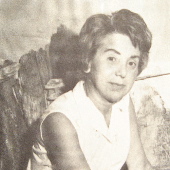
Jane Schenthal Frank was an American multidisciplinary artist, known as a painter, sculptor, mixed media artist, illustrator, and textile artist. Her landscape-like, mixed-media abstract paintings are included in public collections, including those of the Corcoran Gallery of Art, the Baltimore Museum of Art, and the Smithsonian American Art Museum. She studied with artists, Hans Hofmann and Norman Carlberg.

Knox Martin was an American painter, sculptor, and muralist.
Miguel Condé is a Mexican figurative painter, draughtsman, and print maker. According to Radio France, he is "one of the most important contemporary masters in the field of engraving." Condé's works are in important museum collections all over the world; he is exhibiting regularly at both public and private venues, and he has received numerous international honors and awards.
William S. Dutterer (1943–2007) was a Washington artist who moved to New York City in 1979 and continued making innovative work until his death in January 2007. Over his 40+ year career, Dutterer developed his own idiosyncratic visual vocabulary that often referenced masks, wrapped objects, the idea of exploring the depths, and the concept of the bystander from his minimalist work of the '60s. His work engages the viewer, encouraging us to consider how our culture and world events impact the way we see ourselves and allow others to see us.

Karl Stanley Benjamin was an American painter of vibrant geometric abstractions, who rose to fame in 1959 as one of four Los Angeles–based Abstract Classicists and subsequently produced a critically acclaimed body of work that explores a vast array of color relationships. Working quietly at his home in Claremont, CA, he developed a rich vocabulary of colors and hard-edge shapes in masterful compositions of tightly balanced repose or high-spirited energy. At once intuitive and systematic, the artist was, in the words of critic Christopher Knight, "a colorist of great wit and inventiveness."
Lester Johnson was an American artist and educator. Johnson was a member of the Second Generation of the New York School during the late 1950s. The subject of much of his work is the human figure. His style is considered by critics and art historians to be in the figurative expressionist mode.
Stephen Westfall is an American painter, critic, and professor at Rutgers University and Bard College.

Thornton Willis is an American abstract painter. He has contributed to the New York School of painting since the late 1960s. Viewed as a member of the Third Generation of American Abstract Expressionists, his work is associated with Abstract Expressionism, Lyrical Abstraction, Process Art, Postminimalism, Bio-morphic Cubism and Color Field painting.
Haywood "Bill" Rivers was an African American contemporary artist and gallerist.

Joyce J. Scott is an African-American artist, sculptor, quilter, performance artist, installation artist, print-maker, lecturer and educator. Named a MacArthur Fellow in 2016, and a Smithsonian Visionary Artist in 2019, Scott is best known for her figurative sculptures and jewelry using free form, off-loom beadweaving techniques, similar to a peyote stitch. Each piece is often constructed using thousands of glass seed beads or pony beads, and sometimes other found objects or materials such as glass, quilting and leather. In 2018, she was hailed for working in new medium — a mixture of soil, clay, straw, and cement — for a sculpture meant to disintegrate and return to the earth. Scott is influenced by a variety of diverse cultures, including Native American and African traditions, Mexican, Czech, and Russian beadwork, illustration and comic books, and pop culture.
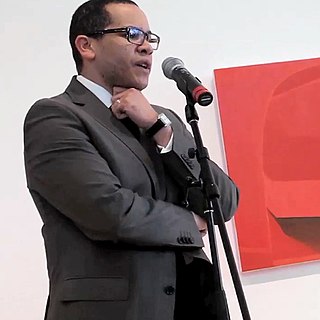
Leslie Smith III is a contemporary African American visual artist. He currently lives and works in Madison, Wisconsin.
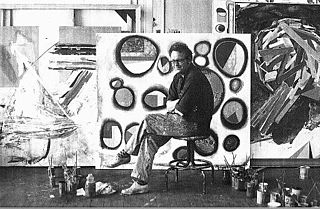
Robert Sterling Neuman was an American abstract painter, printmaker, and an art teacher.
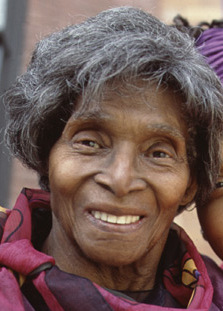
Elizabeth Talford Scott was an American artist, known for her quilts.

Theresa Pollak was an American artist and art educator born in Richmond, Virginia. She was a nationally known painter, and she is largely credited with the founding of Virginia Commonwealth University's School of the Arts. She was a teacher at VCU's School of the Arts between 1928 and 1969. Her art has been exhibited in the Whitney Museum of American Art in New York, the Boston Museum of Fine Art, and the Corcoran Gallery in Washington, D.C. She died at the age of 103 on September 18, 2002 and was given a memorial exhibition at Anderson Gallery of Virginia Commonwealth University.
Dennis "Denny" H. Farber was an American painter, photographer and educator. Faber was the director of the Mount Royal School of Art at Maryland Institute College of Art (MICA) from 2000 to 2004 and co-chair of MICA’s Foundations department from 2010 to 2011.
Yolanda Sanchez is a Cuban-American artist, professor, and fine arts director for the art program at Miami International Airport. She is known for non-figurative, abstract, expressionistic painting. Sanchez currently lives in Miami, Florida where she paints and works for the Miami international airport.
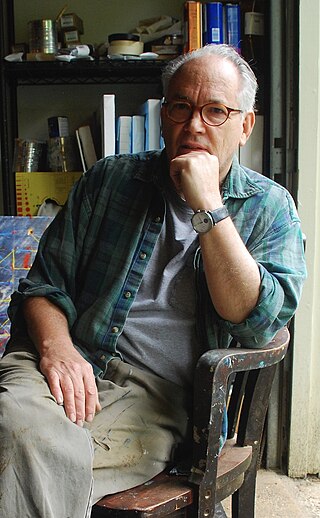
Power Boothe is an American painter known for his abstract works as well as set designs for experimental theatre, dance and video productions. He has also produced short films and visual theater. As a painter, he has been referred to as a "Rogue Minimalist".